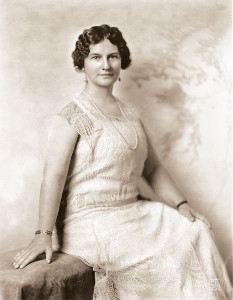Written in Heaven: The Life of the Little Flower of Lisieux

Author:
Frances Parkinson Keyes
Publication:
1937 by Julian Messner, Inc.
Genre:
Biography, Non-fiction
Series:
Messner Shelf of Biographies (World History)
Pages:
201
Current state:
Basic information has been added for this book.
It is under consideration and will be updated when it is evaluated further.
Book Guide
Search for this book used on:
For many years, great theologians and great men of letters have vied with each other in the effort to interpret the life of Saint Therese of Lisieux—familiarly known as the Little Flower—for devout and scholarly readers. It remained for an American woman, who had attained popularity as a novelist and a commentator on current events, but who had never before aspired to the field of hagiography, to interpret the Saint for the average reader as "a woman whose life was apparently one of only average opportunity, but who had within her something which glorified it." It is largely due to Frances Parkinson Keyes that the true meaning of Saint Therese's "Little Way" has been clarified and beautified for multitudes who never before realized that they too could follow it, even if only from afar.
To write the story of Saint Therese, Mrs. Keyes went to live at the Abbaye des Benedictines where the child Therese received her education. In this peaceful and secluded setting, she studied all available source material. Using it as her center, she visited all the places directly or indirectly associated with her subject. She sought out the relatives, the former teachers and schoolmates of the Saint, and conferred freely with those persons who had known that sanctified soul in the flesh. She wrote with painstaking care and deep reverence. And the result was not only an authentic and inspiring biography, but a deeply moving human document and a work of great literary and religious value.
The Saint is presented in various picturesque and charming settings of her native Normandy—Alençon, her birthplace; Liseux, her childhood home; Trouville and Deauville, where she spent her summer vacations; the Abbaye des Benedictines, where she went to school; the Carmelite Convent where she passed the last years of her short life. She appears first as the beloved daughter of cultured and devout parents—a child who, from her tenderest years, felt an undeviating urge towards God. Then, as a shy and sensitive schoolgirl whose fellow pupils, for the most part, failed to appreciate her. Next, as the resolute adolescent, so sure of her vocation that she dared appeal to the Pope himself when lesser authorities blocked her way to a convent. Eventually, as the consecrated Carmolite, whose literal interpretation of her vows made her an example to her fellow-nuns; whose God-given talents found expression in the creative arts of painting and writing; and whose supreme faith sustained her through a long and harrowing illness. And finally, as a "Little Sister" who revealed herself alike to sinners and sufferers, hardened soldiers and innocent children, so vividly and so wonderfully that they clamored for her canonization.
The little way in which Therese Martin is showed her fortitude of spirit is not intricate, it is not beyond the skill and strength of anyone to follow in at least some small degree. She emerges from the story Mrs. Keyes tells as the symbol for women everywhere, of purpose, of purity, of resourcefulness, of cheerfulness and courage, of loving kindness and faith. She stands for that sublime and supreme simplicity which teaches a lesson that can be put to universal use.
"The Little Flower" has been an inspiration to many, and through this intimate revelation of her life, with God's help, she will be a guiding star to many more.
From the reprint, Therese: Saint of a Little Way
To view an example page please sign in.
Please sign in to access the type of illustrations and view more books with this type.
To view reprints of this book please sign in.
Content Guide
Please sign in to access all of the topics associated with this book and view other books with the same topics.
Please sign in to access the locations this book takes place in and view other books in the same location.
Please sign in to access the time periods this book takes place in and view other books in the same time period.
For information about the lead characters please sign in.
Find This Book
Search for this book used on:


